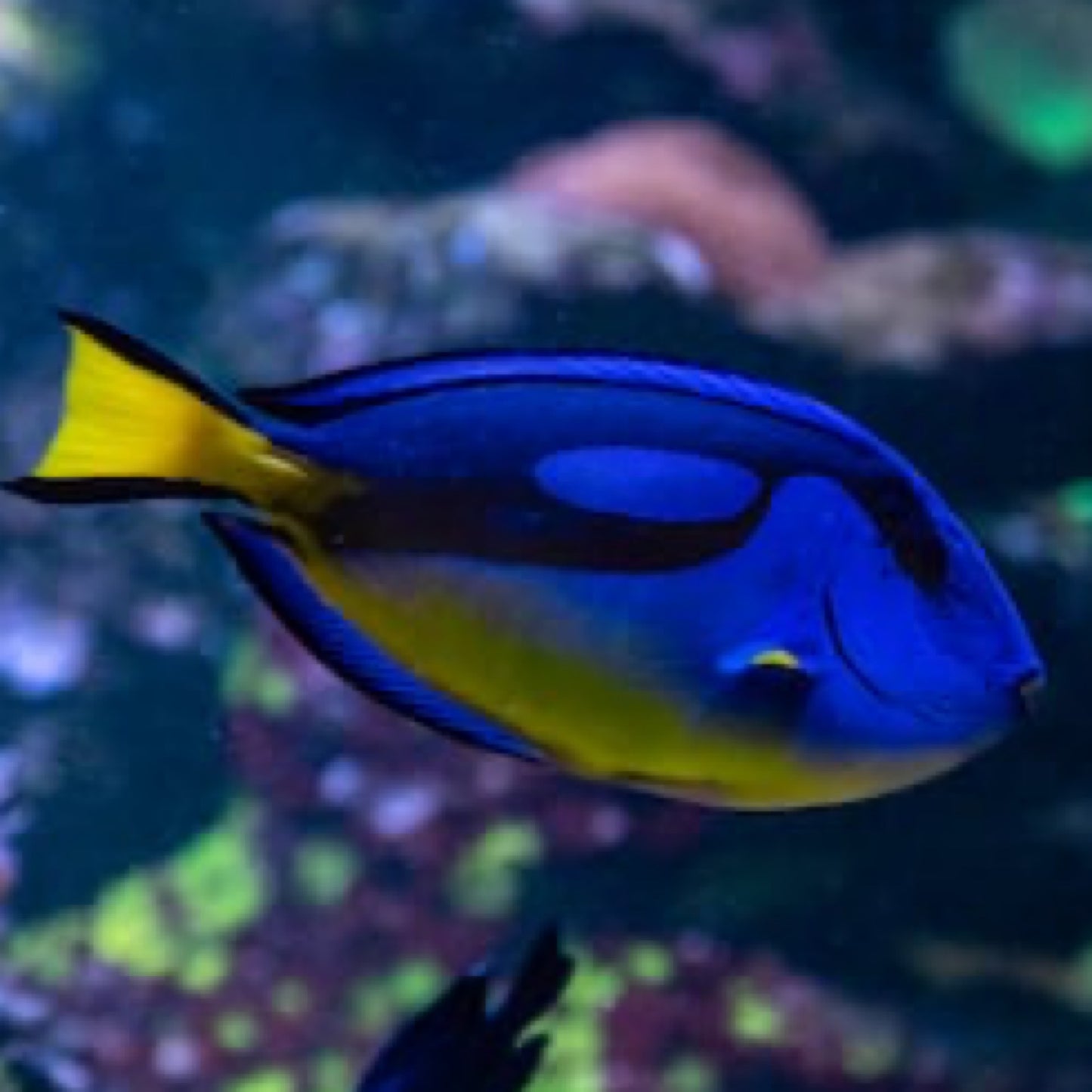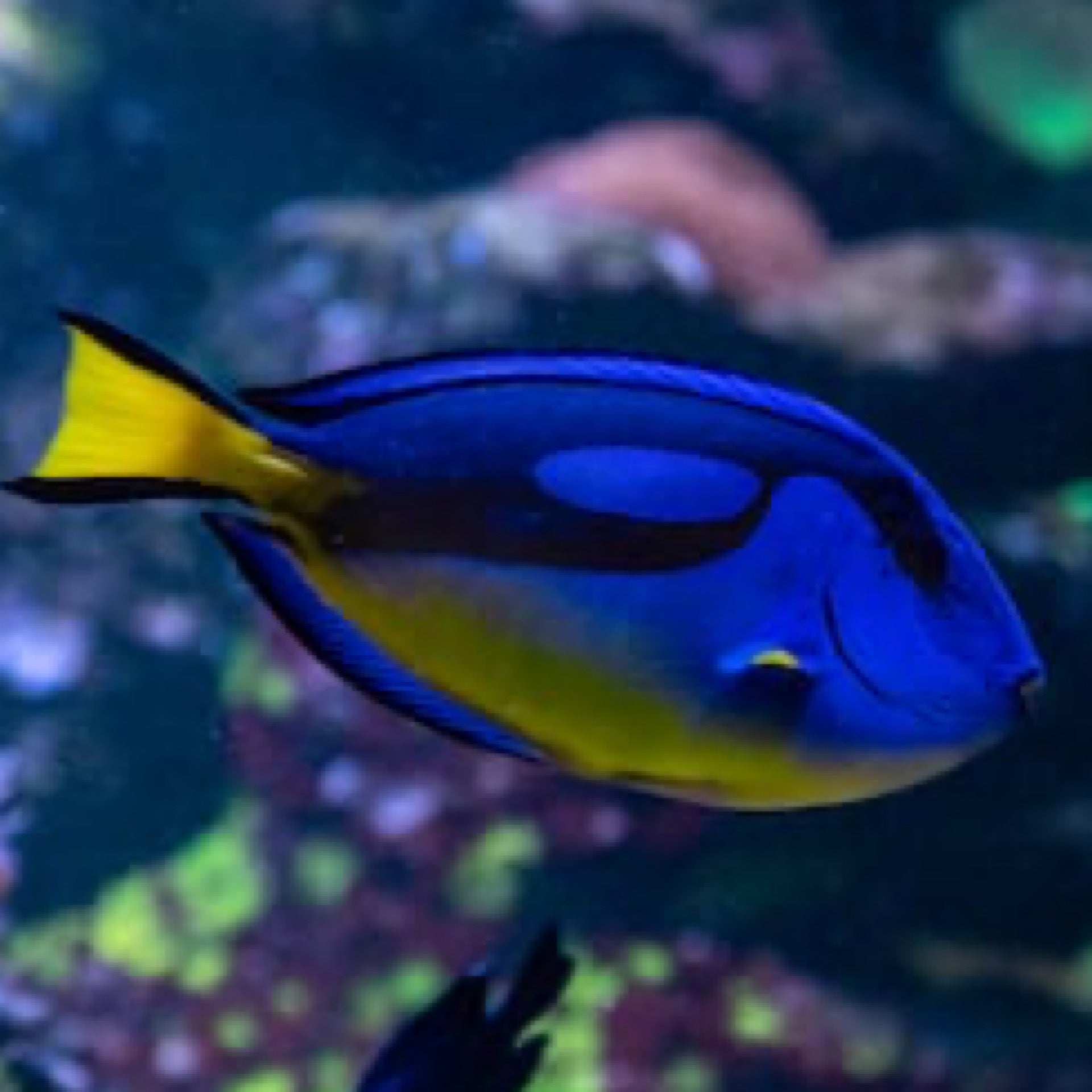Yellow Belly Blue Hippo Tang
Yellow Belly Blue Hippo Tang
Out of stock
Couldn't load pickup availability
Small : 1-1.75
Medium : 2-2.5
Large : 2.5-3.5
The Yellow Belly Hippo Tang, also known as the Yellow Belly Regal Blue Tang or Paracanthurus paracanthurus, is a stunning and sought-after marine fish species. It is distinguished by its vibrant blue body with a striking yellow belly and tail.
Similar to the Hippo Tang and other tang species, the care requirements for the Yellow Belly Hippo Tang are moderate. It is best suited for experienced hobbyists or those willing to provide the necessary care it needs to thrive.
The diet of the Yellow Belly Hippo Tang should consist mainly of high-quality marine algae and seaweed. Offering a variety of dried seaweed, spirulina flakes, and other herbivorous pellet foods will help ensure their nutritional needs are met. Supplementing their diet with occasional protein-based foods like mysis shrimp or brine shrimp can also be beneficial.
Yellow Belly Hippo Tangs are generally peaceful fish, but they may become aggressive towards other tangs or similar fish, especially if kept in close quarters. Providing plenty of swimming space and visual barriers, such as rock formations or coral structures, can help reduce aggression and territorial behavior.
In terms of reef compatibility, the Yellow Belly Hippo Tang is considered reef-safe. They usually do not bother corals or sessile invertebrates. However, it's important to monitor their behavior and ensure that any delicate corals or invertebrates in the tank are not being disturbed or nipped at.
The recommended tank size for a Yellow Belly Hippo Tang is 75 gallons or more. This will provide ample swimming space for these active swimmers. It's also essential to maintain stable water parameters within the ranges of 72-78°F (22-26°C) for temperature, pH of 8.1-8.4, and specific gravity of 1.020-1.025.
Regular water changes and efficient filtration systems are crucial for maintaining excellent water quality. The Yellow Belly Hippo Tang is relatively hardy, but it's still important to provide a well-maintained and stable environment to ensure their long-term health.
With proper care, attention to their specialized dietary needs, adequate tank size, and suitable tank mates
Shop now, pay later with 4 interest-free installments with AfterPay
Share


